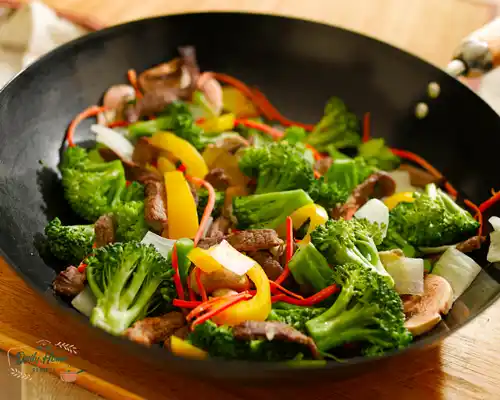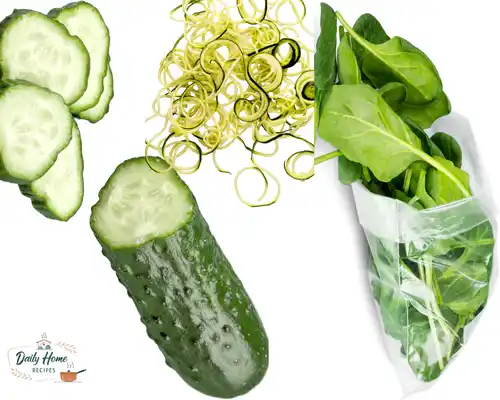Let’s be honest the idea of pre-chopped produce used to feel like a guilty shortcut. Like you were cheating on your inner food purist. But if you’ve ever stared blankly into a fridge at 7 p.m. too tired to julienne a single pepper, you know the truth: sometimes convenience is the only thing standing between you and a real meal.
That’s where store-bought produce kits and chopped veggies come in. Done right, they’re not just time-savers they’re energy-savers, decision-fatigue reducers, and yes, sometimes even weeknight heroes. And no, this isn’t a love letter to soggy lettuce mixes that die by day two. We’re talking real-deal kits from Trader Joe’s, Whole Foods, and a few unexpected sources that actually hold up and make prepping fast, clean, and surprisingly satisfying.
In this guide, we’ll break down:
Which pre-chopped veggies are worth it (and which ones betray you in the fridge).
The top 3 pre-made kits that real people actually use.
How to prep once and eat all week without tossing half your groceries by Thursday.
Let’s slice through the guilt, save some serious minutes, and maybe even make your produce drawer a place of pride, not shame.
Which Veggies Last Pre-Chopped
Here’s the fantasy: you grab a bag of pre-cut vegetables, toss them into a skillet or bowl, and boom dinner, minus the knife, minus the mess. But if you’ve ever opened a bag of sad, slimy spinach or spotted mystery water pooling at the bottom of your chopped cucumbers… yeah. The dream can rot literally.
So which veggies actually survive the pre-chop treatment? And which ones betray you the second you peel the sticker?
The Pre-Chopped Survivors (AKA The Real MVPs)
Some veggies are built for this life. These are the ones that last, taste right, and actually make the prep shortcut feel like a win not a tradeoff.
- Brussels Sprouts (shaved or halved): Practically apocalypse-proof. Roast them, sauté them, toss them raw into salads they’re still going strong five days in.
- Cabbage (green or red): Shockingly durable. Shredded versions stay crisp and clean in the fridge for up to a week. Great for slaws, tacos, stir-fries or just existing without rotting.
- Broccoli & Cauliflower Florets: Trader Joe’s steam-ready bags are a weekday lifesaver. Slightly dried edges? Maybe. But give them a rinse and they’re still crisp for up to six days.
- Carrot Sticks or Matchsticks: The crunchy backbone of any prepped snack plate. They’ll hang in there for seven days maybe longer if you forget them in the back of the fridge (not that we recommend that).
- Bell Peppers (sliced): Colorful, sweet, and surprisingly stable. Just don’t let them dry out airtight containers are your friend here.
Storage Secret: Moisture is your silent enemy. If the bag fogs up or starts sweating, that’s spoilage’s opening act. Move everything to a paper towel–lined container it’s a ridiculously simple trick that can buy you two extra days.

The Flimsy, Heartbreaking Letdowns

Not all pre-cuts are worth the gamble. Some veggies just weren’t meant to be mass-sliced and shelved. These are the heartbreakers:
- Leafy Greens (spinach, arugula, spring mix): Even “pre-washed” ones are a ticking time bomb once opened. Best to eat them within 48 hours or risk that limp, sad-leaf life.
- Cucumbers (pre-sliced): They look refreshing… for about a day. Then: waterlogged and floppy. Skip unless you’re eating them immediately.
- Zucchini Noodles (“zoodles”): They tempt you with convenience but by Day 2 they’re soggy noodles in a soup you didn’t want.
Workaround: Buy long-lasting pre-chopped staples, and pair them with one or two quick-chop items at home. It’s a compromise but a smart one. Think: ready-to-go cabbage + freshly sliced cucumber = crunchy balance.

FAQ How Long Do Pre-Chopped Veggies Really Last?
Real answer? Depends on the veggie and how you store it but here’s a quick survival guide:
- Hardy veggies (cabbage, carrots, broccoli): 5 to 7 days
- Fragile greens, cucumbers, mushrooms: 2 to 3 days once opened
- Vacuum-sealed or steam-ready packs: Up to 10 days unopened (check the best-by date closely)
Storage upgrade tip: After opening, move veggies to an airtight container with a dry paper towel. It’s the cheapest freshness insurance you’ll ever buy.
Top 3 Store Kits That Actually Work
Let’s cut to the chase: most store-bought kits sound like a good idea… until you open the bag and realize half of it is wilted, the dressing tastes like regret, and the croutons somehow feel both soggy and sharp. But not all kits are a waste of shelf space. Some? Legit meal-savers.
After more trial (and error) than we’d like to admit, here are three kits that consistently deliver in flavor, texture, and straight-up dinner relief.
- Trader Joe’s Southwestern Chopped Salad Kit
This one’s a cult favorite for a reason. Shredded cabbage, romaine, carrots, cilantro, pepitas, and that creamy southwest dressing. It’s smoky, a little sweet, and doesn’t go limp in the bowl.
Why it works: Cabbage-based means it holds up for 2–3 days post-mix
Quick fix: Add grilled chicken, black beans, or roasted corn and It becomes a full meal.
Human bias alert: We’ve eaten this three days in a row and didn’t complain once.

- Whole Foods Stir Fry Veggie Mix
This kit flies under the radar but deserves more hype. Pre-cut broccoli, snow peas, carrots, bell peppers all ready for a hot pan and your favorite sauce.
Why it works: The cuts are just thick enough not to turn soggy mid-sauté.
Time saved: No trimming, no slicing, no washing. Dinner in 7 minutes.
Pro tip: Add tofu or shrimp, throw over rice, done.
- Costco Veggie Tray (Repurposed)
Hear us out it’s not technically a kit, but it might be the most versatile produce hack out there. The bulk veggie trays with carrots, snap peas, broccoli, and celery? Slice ‘em thinner, and they become stir-fry soup base, snack plate, or taco topping material.
Why it works: You get a little of everything, and it’s all sturdy, Meal-prep–friendly stuff.
No waste: Use the ranch dip? Sure. Or skip it and use your own dressing to stretch into real meals.
FAQ Are Salad Kits Healthy or Full of Additives?
Answer: Depends on the kit. Most chopped veggie kits are just that chopped veggies. The problem (if any) usually lives in the dressing. Some are heavy on sugar, oils, and preservatives. But you can:
Use just half the packet (flavor without overload)
Swap in your own dressing
Check the label if it’s got more than 15 ingredients and you can’t pronounce half, maybe rethink
Bottom line : the kits themselves are rarely unhealthy it’s what’s in the packet that matters.
Prep Once, Eat All Week (Without Waste)
Let’s talk about good intentions gone bad the overflowing cart of produce you swore you’d chop “as soon as you got home,” only to find it wilted in the crisper by Thursday. We’ve all been there. That’s why the smartest move isn’t prepping everything it’s prepping strategically.
Here’s how to build a week of meals without overcommitting or overbuying.

Start With One Base That Goes With Everything
Pick one hearty , versatile veggie that can handle repetition without getting boring Think
Shredded cabbage (red or green) great for slaws , sautés, tacos, bowls.
Pre-cut kale survives the week and takes on any flavor you throw at it
Carrot ribbons or matchsticks raw, roasted, or stir-fried, they always work.
That’s your anchor. Everything else? Rotate around it.
Add 2–3 “Wildcard” Kits or Packs
To keep it interesting (and avoid “I-can’t-eat-this-again” fatigue), grab:
One Trader Joe’s salad kit something with a punchy flavor or fun toppings.
One Whole Foods stir-fry mix you can use it as-is or remix into an omelet, wrap, or soup.
Maybe a snack tray or steam bag anything low-lift that extends your options.
Now you’ve got ingredients that mix, match, and actually get eaten before they expire.
Use the Rule of Three
Every prepped item should be able to go into:
Something raw (salad, wrap, snack)
Something cooked (sauté, bake, stir-fry)
Something portable (lunch bowl, wrap, sandwich)
If it can’t flex into those zones? Leave it on the shelf.
BTW: Don’t prep every veggie in advance. Some things are better sliced fresh like cucumbers, avocado, or tomatoes. Do those day-of. You’ll thank yourself later.
FAQ What’s the Best Way to Keep Chopped Veggies From Spoiling?
Answer: Two simple moves:
Transfer immediately to airtight containers (not the original plastic bag).
Add a dry paper towel inside it absorbs moisture that accelerates decay.
Bonus trick: label with the open date. It sounds extra, but knowing when you started the clock helps you prioritize what to use first.
Are Produce Kits More Expensive?
Short answer? Technically, yes. You’re paying for the labor the washing, the chopping, the perfectly portioned packaging. Ounce for ounce, a bag of pre-cut broccoli costs more than a whole head. That’s just economics.
But here’s the twist most people forget: how much are you actually throwing away when you buy the “cheaper” whole version?
Because if that untouched head of cauliflower turns yellow and soggy at the back of your fridge (again), the money you “saved” doesn’t really count. And if a $5 salad kit stops you from ordering $18 takeout on a Tuesday? That kit basically paid you.
When It’s Worth It:
- You’re slammed and can’t cook from scratch every night.
- You hate chopping (or just don’t do it let’s be real).
- You’ve thrown out produce more than twice this month.
When It’s Not:
- You have time and actually enjoy the process of prepping.
- You’re cooking in bulk (e.g., Sunday batch cooking).
- You’re buying in-season produce that’s easy to prep raw.
Human truth: Kits aren’t for every meal they’re for the days you’d otherwise give up. And that’s when they earn their price.
Final Thoughts: Convenience Isn’t Cheating It’s Strategy
Somewhere along the way, we were taught that “real” cooking means starting from scratch. But in real life with work, stress, families, burnout, and all the unpredictable chaos between 6 and 8 p.m. that idea can feel more punishing than inspiring.
Here’s the truth: using pre-chopped produce or a store kit isn’t lazy. It’s smart. It’s permission to eat better without burning out. It’s choosing progress over perfection a bowl of something fresh and fast instead of frozen pizza (again).
Whether you’re all in on chopped cabbage and stir-fry packs, or just testing the waters with a single salad kit this week, the point isn’t to prep perfectly it’s to actually eat the food you buy. And maybe, just maybe, make your fridge feel like less of a guilt trap and more like a launchpad.
Because in the end, what saves you time also helps you show up. For your meals, your health, and yourself.


Leave a Reply